Single-trial neurodynamics reveal N400 and P600 coupling in language comprehension
- PMID: 39712092
- PMCID: PMC11655752
- DOI: 10.1007/s11571-023-09983-7
Single-trial neurodynamics reveal N400 and P600 coupling in language comprehension
Abstract
Theories of the electrophysiology of language comprehension are mostly informed by event-related potential effects observed between condition averages. We here argue that a dissociation between competing effect-level explanations of event-related potentials can be achieved by turning to predictions and analyses at the single-trial level. Specifically, we examine the single-trial dynamics in event-related potential data that exhibited a biphasic N400-P600 effect pattern. A group of multi-stream models can explain biphasic effects by positing that each individual trial should induce either an N400 increase or a P600 increase, but not both. An alternative, single-stream account, Retrieval-Integration theory, explicitly predicts that N400 amplitude and P600 amplitude should be correlated at the single-trial level. In order to investigate the single-trial dynamics of the N400 and the P600, we apply a regression-based technique in which we quantify the extent to which N400 amplitudes are predictive of the electroencephalogram in the P600 time window. Our findings suggest that, indeed, N400 amplitudes and P600 amplitudes are inversely correlated within-trial and, hence, the N400 effect and the P600 effect in biphasic data are driven by the same trials. Critically, we demonstrate that this finding also extends to data which exhibited only monophasic effects between conditions. In sum, the observation that the N400 is inversely correlated with the P600 on a by-trial basis supports a single stream view, such as Retrieval-Integration theory, and is difficult to reconcile with the processing mechanisms proposed by multi-stream models.
Keywords: ERPs; Language Comprehension; N400; Neurolinguistics; P600; Single-trial analysis.
© The Author(s) 2023.
Conflict of interest statement
Conflict of interestThe authors have no competing interests to declare.
Figures


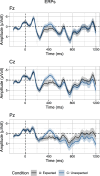

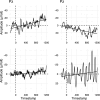

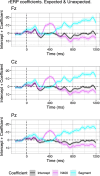

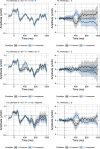

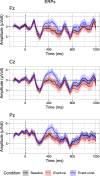

References
-
- Alday PM (2019) How much baseline correction do we need in ERP research? Extended GLM model can replace baseline correction while lifting its limits. Psychophysiology 56(12):e13451. 10.1111/psyp.13451 - PubMed
-
- Aurnhammer C, Delogu F, Brouwer H, Crocker MW (2023) The P600 as a continuous index of integration effort. Psychophysiology. 10.1111/psyp.14302 - PubMed
-
- Bezanson J, Edelman A, Karpinski S, Shah VB (2017) Julia: A fresh approach to numerical computing. SIAM Rev 59(1):65–98. 10.1137/141000671
-
- Bornkessel-Schlesewsky I, Schlesewsky M (2008) An alternative perspective on “semantic P600’’ effects in language comprehension. Brain Res Rev 59(1):55–73. 10.1016/j.brainresrev.2008.05.003 - PubMed
LinkOut - more resources
Full Text Sources

